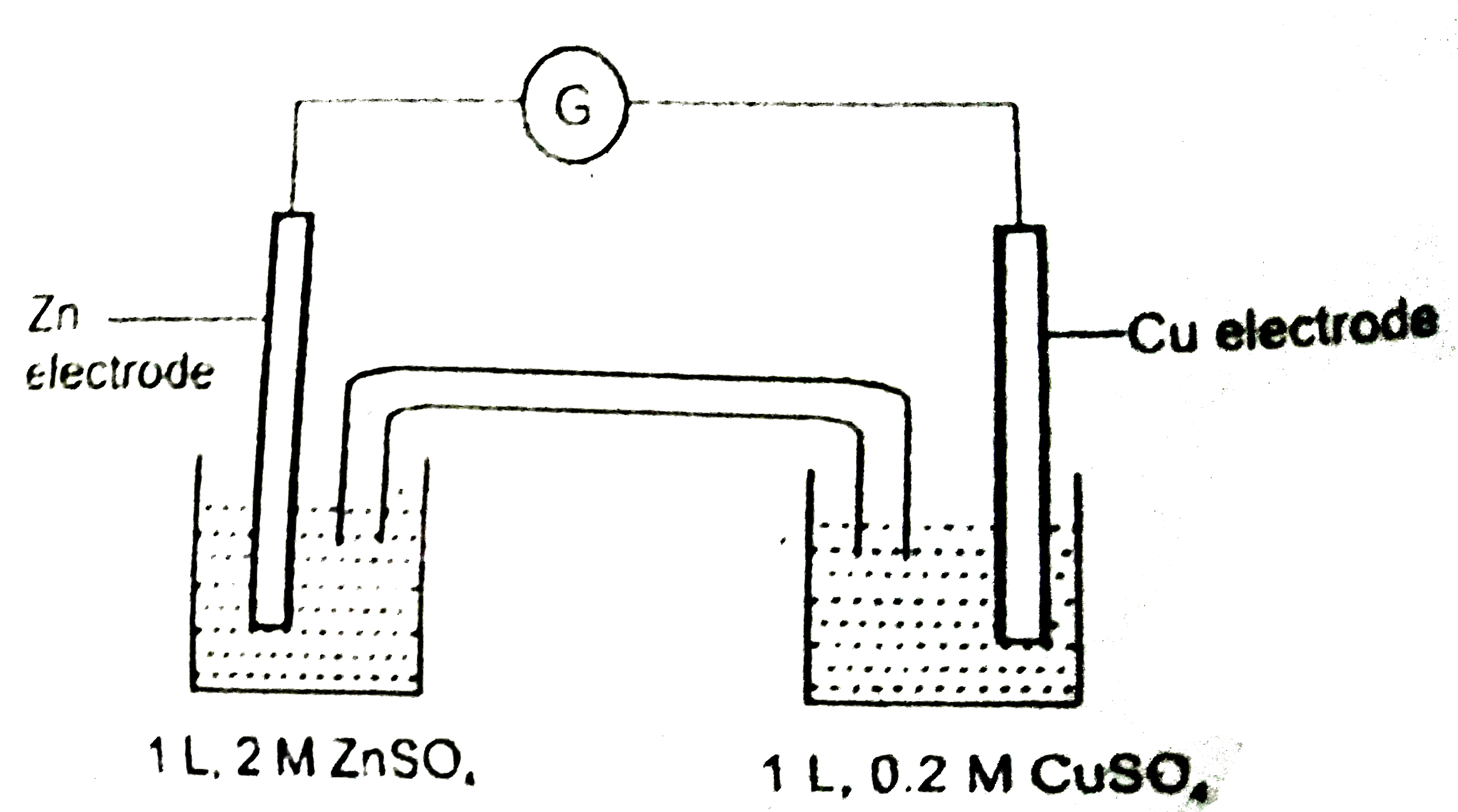![[Given: E(Zn^(2+)|Zn)^(@)=-.0.76V K(f)[Cu(NH(3))(4)]^(+2)=4xx10^(11) E(Cu^(2+)|Cu)^(@)=0.34V At what conc. Of Cu^(+2), emf of the cell will be zero (at 298K) at conc. Of Zn^(+2) is remaining same?](https://d10lpgp6xz60nq.cloudfront.net/physics_images/GRB_PHY_CHM_P2_V03_QB_C12_E01_437_Q01.png)
[Given:
E∘Zn2+∣Zn=−.0.76VKf[Cu(NH3)4]+2=4×1011
E∘Cu2+∣Cu=0.34V
At what conc. Of Cu+2, emf of the cell will be zero (at 298K) at conc. Of Zn+2 is remaining same?
1.03×10−37
1.03×10−20
3.78×10−4
0.0068
The correct Answer is:A
Topper's Solved these Questions
- ELECTROCHEMISTYBOOK - GRB PUBLICATIONCHAPTER - ELECTROCHEMISTYEXERCISE - Match the column type
16 Videos
- ELECTROCHEMISTYBOOK - GRB PUBLICATIONCHAPTER - ELECTROCHEMISTYEXERCISE - Subjective type
39 Videos
- ELECTROCHEMISTYBOOK - GRB PUBLICATIONCHAPTER - ELECTROCHEMISTYEXERCISE - Multiple objective type
33 Videos
- D-BLOCK ELEMENTSBOOK - GRB PUBLICATIONCHAPTER - D-BLOCK ELEMENTSEXERCISE - Subjective Type
18 Videos
- ENVIRONMENTAL CHEMISTRY BOOK - GRB PUBLICATIONCHAPTER - ENVIRONMENTAL CHEMISTRY EXERCISE - Straight objective type
40 Videos
Similar Questions

Given:
E∘Zn+2/Zn=−0.76V
E∘Cu+2/Cu=+0.34V
Kf[Cu(NH3)4]2+=4×1011
2.303RF=2×10−4
At what concentration of Cu+2 emf of the cell will be zero (at 298K) and concentration of Zn+2 is remains same:
View Solution
Given:
E∘Zn+2/Zn=−0.76V
E∘Cu+2/Cu=+0.34V
Kf[Cu(NH3)4]2+=4×1011
2.303RF=2×10−4
Find emf at cell of 200K if E∘ values are independent of temperature [log2=0.3]
View Solution
Knowledge Check

Given:
E∘Zn+2/Zn=−0.76V
E∘Cu+2/Cu=+0.34V
Kf[Cu(NH3)4]2+=4×1011
2.303RF=2×10−4
At what concentration of Cu+2 emf of the cell will be zero (at 298K) and concentration of Zn+2 is remains same:A1.19×10−37B1.19×10−20C3.78×10−4D0.0068
Given E∘Zn+2∣Zn=−0.76V
Kf[Cu(NH3)4]+2=4×1011
E∘Cu+2∣Cu=0.34V
Answer the following.
Q. When 1 mole NH3 added to cathode compartment than emf of cell is (at 298 K)A0.81 VB1.91 VC1.1 VD0.72 V
[Given:
E∘Zn2+∣Zn=−.0.76VKf[Cu(NH3)4]+2=4×1011
E∘Cu2+∣Cu=0.34V
The emf of cell at 200K is: [Given: 2.303×RF=2×10−4 and assume that E∘ values are independent of temperature.]A1.7VB1.08VC1.09VD1.10V

Given:
E∘Zn+2/Zn=−0.76V
E∘Cu+2/Cu=+0.34V
Kf[Cu(NH3)4]2+=4×1011
2.303RF=2×10−4
When 1 mole of NH3 added to cathode compartement than emf of cell is (at 298K):
View SolutionThe emf of the cell, (EZn2+/Zn=−0.76V)Zn/Zn2+(1M)∣∣Cu2+(1M)Cu
(ECu2+/Cu=+0.34V) will be :
View SolutionThe emf of the cell, (EZn2+/Zn=−0.76V)Zn/Zn2+(1M)∣∣Cu2+(1M)Cu
(ECu2+/Cu=+0.34V) will be :
View Solution
Given:
E∘Zn+2/Zn=−0.76V
E∘Cu+2/Cu=+0.34V
Kf[Cu(NH3)4]2+=4×1011
2.303RF=2×10−4
Find emf at cell of 200K if E∘ values are independent of temperature [log2=0.3]
View Solution
Given:
E∘Zn+2/Zn=−0.76V
E∘Cu+2/Cu=+0.34V
Kf[Cu(NH3)4]2+=4×1011
2.303RF=2×10−4
When 1 mole of NH3 added to cathode compartement than emf of cell is (at 298K):
View Solution
